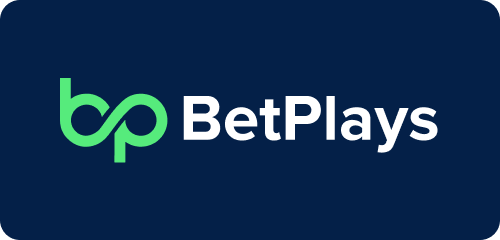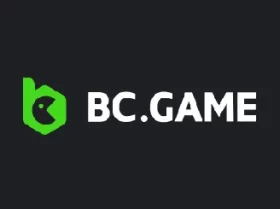google double diamond
In the rapidly evolving landscape of the online entertainment industry, innovation is not just a competitive advantage but a necessity. Companies like Google have adopted various frameworks to ensure they stay ahead of the curve. One such framework is the “Double Diamond” model, which Google has adapted and implemented with great success. This article delves into how the Google Double Diamond approach can be leveraged by businesses in the online entertainment sector, including gambling, games, and sports betting.Understanding the Double Diamond ModelThe Double Diamond model, originally developed by the British Design Council, is a design process that consists of two phases: “Discover” and “Deliver,” each divided into two diamonds representing divergent and convergent thinking.
| Celestial Bet | ||
| Luck&Luxury | ||
| Celestial Bet | ||
| Win Big Now | ||
| Elegance+Fun | ||
| Luxury Play | ||
| Opulence & Thrills | ||
google double diamond
In the rapidly evolving landscape of the online entertainment industry, innovation is not just a competitive advantage but a necessity. Companies like Google have adopted various frameworks to ensure they stay ahead of the curve. One such framework is the “Double Diamond” model, which Google has adapted and implemented with great success. This article delves into how the Google Double Diamond approach can be leveraged by businesses in the online entertainment sector, including gambling, games, and sports betting.
Understanding the Double Diamond Model
The Double Diamond model, originally developed by the British Design Council, is a design process that consists of two phases: “Discover” and “Deliver,” each divided into two diamonds representing divergent and convergent thinking. Google has refined this model to suit its innovative needs, making it a powerful tool for strategic decision-making.
Phase 1: Discover
1.1 Divergent Thinking
- Problem Identification: Start by identifying the broad challenges or opportunities within the online entertainment industry. For instance, in the gambling sector, this could involve understanding the pain points of users, such as slow transaction times or lack of personalized experiences.
- Market Research: Conduct extensive market research to gather insights. This includes analyzing user behavior, competitor strategies, and emerging trends. For example, understanding the shift towards mobile gaming and the increasing demand for live casino experiences.
1.2 Convergent Thinking
- Problem Definition: Narrow down the identified challenges to a few key issues that need immediate attention. In the context of online casinos, this might involve focusing on improving user engagement through better UI/UX design.
- Opportunity Prioritization: Prioritize the opportunities based on their potential impact and feasibility. For instance, enhancing the security features of online gambling platforms might be a high-priority opportunity.
Phase 2: Deliver
2.1 Divergent Thinking
- Solution Exploration: Brainstorm a wide range of potential solutions to the defined problems. In the gaming industry, this could involve exploring new game mechanics, virtual reality experiences, or blockchain technology for secure transactions.
- Prototyping: Create prototypes of the most promising solutions. For example, developing a prototype of a new slot machine game with enhanced graphics and interactive features.
2.2 Convergent Thinking
- Solution Development: Refine and develop the most viable solutions. This involves rigorous testing, feedback collection, and iterative improvements. For instance, in football betting, this could mean developing a predictive algorithm that enhances the accuracy of betting odds.
- Implementation: Roll out the final solution to the market. Ensure that the implementation is smooth and that users are well-informed about the new features. For example, launching a new live betting platform with real-time updates and personalized recommendations.
Applying the Google Double Diamond in the Online Entertainment Industry
Online Gambling
- Problem Identification: High churn rates and low user retention.
- Solution Exploration: Implement gamification elements, such as loyalty programs and leaderboards, to increase user engagement.
- Implementation: Launch a new loyalty program with tiered rewards and personalized offers.
Online Games
- Problem Identification: Lack of diversity in game genres and repetitive gameplay.
- Solution Exploration: Develop new game genres and introduce cross-platform compatibility.
- Implementation: Release a new series of games that cater to different demographics and ensure they are playable across multiple devices.
Football Betting
- Problem Identification: Inaccurate odds and lack of real-time data.
- Solution Exploration: Develop advanced predictive algorithms and integrate real-time data feeds.
- Implementation: Launch a new betting platform with enhanced odds accuracy and real-time updates.
The Google Double Diamond model provides a structured yet flexible approach to innovation, making it highly applicable to the dynamic online entertainment industry. By following this model, businesses can systematically identify and address key challenges, explore and develop innovative solutions, and ultimately deliver products and services that meet the evolving needs of their users.
double diamond method
In the ever-evolving landscape of online entertainment, gambling, and gaming industries, innovation and strategic planning are crucial for success. One such methodology that has gained traction in various sectors, including design, product development, and even business strategy, is the Double Diamond Method. This article delves into the Double Diamond Method, its phases, and how it can be applied to enhance decision-making and innovation in industries like online entertainment, gambling, and gaming.
What is the Double Diamond Method?
The Double Diamond Method is a design thinking framework developed by the British Design Council. It is a visual representation of the design process, emphasizing the importance of divergent and convergent thinking. The method is divided into four distinct phases, represented by two diamonds, hence the name “Double Diamond.”
The Four Phases of the Double Diamond Method
- Discover
- Define
- Develop
- Deliver
Phase 1: Discover
The first phase, Discover, is all about understanding the problem or opportunity. This phase involves extensive research and exploration to gather insights and identify potential challenges or opportunities.
Key Activities in the Discover Phase
- Market Research: Analyze market trends, customer preferences, and competitive landscape.
- User Interviews: Conduct interviews with potential users or customers to understand their needs and pain points.
- Data Analysis: Review existing data to identify patterns and insights.
Phase 2: Define
In the Define phase, the focus shifts to synthesizing the information gathered during the Discover phase. This phase involves narrowing down the problem space and defining the specific problem or opportunity that needs to be addressed.
Key Activities in the Define Phase
- Problem Framing: Clearly articulate the problem or opportunity.
- Stakeholder Alignment: Ensure all stakeholders agree on the problem definition.
- Hypothesis Formation: Develop hypotheses about potential solutions.
Phase 3: Develop
The Develop phase is where the creative process begins. This phase involves generating a wide range of ideas and solutions, followed by refining and prototyping the most promising ones.
Key Activities in the Develop Phase
- Ideation: Brainstorm a variety of solutions and ideas.
- Prototyping: Create prototypes of the most promising ideas.
- Testing: Conduct initial testing and gather feedback.
Phase 4: Deliver
The final phase, Deliver, is about implementing the chosen solution and ensuring it meets the defined objectives. This phase involves refining the solution based on feedback and launching it to the market.
Key Activities in the Deliver Phase
- Refinement: Make necessary adjustments based on testing and feedback.
- Launch: Deploy the solution to the market.
- Evaluation: Monitor the solution’s performance and gather post-launch feedback.
Applying the Double Diamond Method in Online Entertainment and Gambling
The Double Diamond Method can be particularly effective in industries like online entertainment, gambling, and gaming, where innovation and customer satisfaction are paramount.
Example Applications
- Game Development: Use the Discover phase to understand player preferences and pain points, then define the specific game mechanics or features to address these issues. In the Develop phase, prototype different game concepts and test them with a focus group. Finally, refine and launch the game in the Deliver phase.
- Casino Innovation: In the Discover phase, analyze player behavior and preferences to identify opportunities for new casino games or features. Define the specific problem or opportunity, develop and prototype new game concepts, and then refine and launch them based on player feedback.
- Football Betting Platforms: Use the Discover phase to understand user needs and pain points in football betting. Define the specific problem, develop and prototype new betting features or interfaces, and refine and launch them based on user feedback.
The Double Diamond Method provides a structured yet flexible approach to innovation and problem-solving. By following its four phases—Discover, Define, Develop, and Deliver—businesses in the online entertainment, gambling, and gaming industries can enhance their decision-making processes, drive innovation, and ultimately deliver products and services that meet customer needs and exceed expectations.

slot machine 2.0 hackerrank solution java
In the world of online entertainment and gambling, slot machines have always been a popular choice. With the advent of technology, these games have evolved, and so have the challenges associated with them. One such challenge is the “Slot Machine 2.0” problem on HackerRank, which requires a solution in Java. This article will guide you through the problem and provide a detailed solution.
Understanding the Problem
The “Slot Machine 2.0” problem on HackerRank is a programming challenge that simulates a slot machine game. The objective is to implement a Java program that can simulate the game and determine the outcome based on given rules. The problem typically involves:
- Input: A set of reels with symbols.
- Output: The result of the spin, which could be a win or a loss.
Key Components of the Problem
- Reels and Symbols: Each reel contains a set of symbols. The symbols can be numbers, letters, or any other characters.
- Spinning the Reels: The program should simulate the spinning of the reels and determine the final arrangement of symbols.
- Winning Conditions: The program must check if the final arrangement of symbols meets the winning conditions.
Solution Approach
To solve the “Slot Machine 2.0” problem, we need to follow these steps:
- Read Input: Parse the input to get the symbols on each reel.
- Simulate the Spin: Randomly select symbols from each reel to simulate the spin.
- Check for Wins: Compare the final arrangement of symbols against the winning conditions.
- Output the Result: Print whether the spin resulted in a win or a loss.
Java Implementation
Below is a Java implementation of the “Slot Machine 2.0” problem:
import java.util.*; public class SlotMachine2 { public static void main(String[] args) { Scanner scanner = new Scanner(System.in); // Read the number of reels int numReels = scanner.nextInt(); scanner.nextLine(); // Consume the newline character // Read the symbols for each reel List<String[]> reels = new ArrayList<>(); for (int i = 0; i < numReels; i++) { String[] symbols = scanner.nextLine().split(" "); reels.add(symbols); } // Simulate the spin String[] result = new String[numReels]; Random random = new Random(); for (int i = 0; i < numReels; i++) { String[] reel = reels.get(i); int randomIndex = random.nextInt(reel.length); result[i] = reel[randomIndex]; } // Check for winning conditions boolean isWin = checkWin(result); // Output the result if (isWin) { System.out.println("Win"); } else { System.out.println("Loss"); } } private static boolean checkWin(String[] result) { // Implement your winning condition logic here // For example, all symbols must be the same String firstSymbol = result[0]; for (String symbol : result) { if (!symbol.equals(firstSymbol)) { return false; } } return true; } } Explanation of the Code
Reading Input:
- The program reads the number of reels and the symbols on each reel.
- The symbols are stored in a list of arrays, where each array represents a reel.
Simulating the Spin:
- A random symbol is selected from each reel to simulate the spin.
- The selected symbols are stored in the
resultarray.
Checking for Wins:
- The
checkWinmethod is called to determine if the spin resulted in a win. - The method checks if all symbols in the
resultarray are the same.
- The
Outputting the Result:
- The program prints “Win” if the spin resulted in a win, otherwise it prints “Loss”.
The “Slot Machine 2.0” problem on HackerRank is a fun and challenging exercise that tests your ability to simulate a slot machine game in Java. By following the steps outlined in this article, you can implement a solution that reads input, simulates the spin, checks for wins, and outputs the result. This problem is a great way to practice your Java skills and understand the logic behind slot machine games.

google double diamond
In the ever-evolving landscape of online entertainment, gambling, and gaming industries, innovation is not just a competitive advantage—it’s a necessity. One of the most effective frameworks for driving innovation is the Google Double Diamond, a strategic approach that has been adopted by many leading companies, including Google, to navigate the complexities of product development and problem-solving.
What is the Google Double Diamond?
The Google Double Diamond is a design thinking framework that breaks down the innovation process into four distinct phases, represented by two diamonds. This framework emphasizes a structured approach to understanding problems, exploring solutions, and delivering outcomes that meet user needs.
The First Diamond: Discover and Define
Discover: In this phase, the focus is on understanding the problem space. This involves extensive research, user interviews, and data analysis to gather insights about the users, their needs, and the context in which they operate.
- User Research: Conduct surveys, interviews, and observations to understand user behaviors and pain points.
- Market Analysis: Analyze market trends, competitor offerings, and industry standards.
- Data Collection: Gather quantitative data to identify patterns and trends.
Define: Once the problem space is well-understood, the next step is to define the problem clearly. This involves synthesizing the insights gathered during the Discover phase to formulate a clear problem statement.
- Problem Statement: Clearly articulate the problem that needs to be solved.
- User Personas: Create detailed user personas to guide the design process.
- Opportunity Areas: Identify key areas where innovation can create the most impact.
The Second Diamond: Develop and Deliver
Develop: With a clear problem statement in place, the focus shifts to generating and testing potential solutions. This is a creative phase where multiple ideas are explored and prototypes are created.
- Ideation: Use brainstorming sessions, design workshops, and other creative techniques to generate a wide range of ideas.
- Prototyping: Create low-fidelity prototypes to test and validate ideas quickly.
- Testing: Conduct usability tests and gather feedback from users to refine the prototypes.
Deliver: The final phase is about delivering the solution to the market. This involves refining the product based on feedback, scaling it up, and ensuring it meets the needs of the users.
- Refinement: Iterate on the prototype based on feedback to create a final product.
- Launch: Plan and execute the launch strategy, including marketing, distribution, and customer support.
- Evaluation: Continuously monitor the product’s performance and gather feedback for future improvements.
Applying the Google Double Diamond in the Online Entertainment Industry
Online Casinos and Gambling Platforms
- Discover: Understand the user experience on existing platforms, identify pain points such as slow loading times, confusing interfaces, and lack of transparency.
- Define: Formulate a problem statement focusing on improving user engagement and satisfaction.
- Develop: Prototype new features like personalized game recommendations, real-time customer support, and transparent payout mechanisms.
- Deliver: Launch the new platform with a focus on user education and support, and continuously gather feedback for improvements.
Football Betting Apps
- Discover: Conduct research to understand user preferences for betting, including factors like ease of use, real-time updates, and security.
- Define: Define the problem as creating a seamless and secure betting experience.
- Develop: Create prototypes with features like live streaming, real-time odds updates, and secure payment options.
- Deliver: Launch the app with a strong focus on user education about responsible betting and continuous support.
Electronic Slot Machines
- Discover: Analyze user behavior and preferences in physical and online slot machines.
- Define: Identify the need for more engaging and interactive slot machine experiences.
- Develop: Prototype new slot machine designs with enhanced graphics, interactive elements, and customizable features.
- Deliver: Introduce the new machines to the market with a focus on user engagement and satisfaction.
The Google Double Diamond framework provides a structured and effective approach to innovation in the online entertainment, gambling, and gaming industries. By following this framework, companies can ensure that their products and services are not only innovative but also deeply aligned with the needs and preferences of their users. Whether it’s improving user experience on online casinos, enhancing football betting apps, or revolutionizing electronic slot machines, the Double Diamond approach offers a proven path to success.












